Amylin-Calcitonin receptor signaling in the medial preoptic area mediates affiliative social behaviors in female mice
- PMID: 35136064
- PMCID: PMC8825811
- DOI: 10.1038/s41467-022-28131-z
Amylin-Calcitonin receptor signaling in the medial preoptic area mediates affiliative social behaviors in female mice
Abstract
Social animals actively engage in contact with conspecifics and experience stress upon isolation. However, the neural mechanisms coordinating the sensing and seeking of social contacts are unclear. Here we report that amylin-calcitonin receptor (Calcr) signaling in the medial preoptic area (MPOA) mediates affiliative social contacts among adult female mice. Isolation of females from free social interactions first induces active contact-seeking, then depressive-like behavior, concurrent with a loss of Amylin mRNA expression in the MPOA. Reunion with peers induces physical contacts, activates both amylin- and Calcr-expressing neurons, and leads to a recovery of Amylin mRNA expression. Chemogenetic activation of amylin neurons increases and molecular knockdown of either amylin or Calcr attenuates contact-seeking behavior, respectively. Our data provide evidence in support of a previously postulated origin of social affiliation in mammals.
© 2022. The Author(s).
Conflict of interest statement
The authors declare no competing interests.
Figures
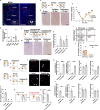
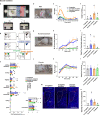

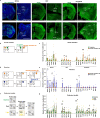
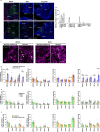
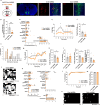

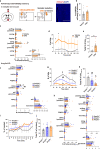
Similar articles
-
Calcitonin receptor signaling in the medial preoptic area enables risk-taking maternal care.Cell Rep. 2021 Jun 1;35(9):109204. doi: 10.1016/j.celrep.2021.109204. Cell Rep. 2021. PMID: 34077719
-
Behavioral and histochemical characterization of sexually dimorphic responses to acute social isolation and reunion in mice.Neurosci Res. 2023 Sep;194:36-43. doi: 10.1016/j.neures.2023.04.001. Epub 2023 Apr 7. Neurosci Res. 2023. PMID: 37030575
-
In vivo recording from calcitonin receptor-expressing neurons in the medial preoptic area during affiliative social behaviors.Neurosci Res. 2025 Jul;216:104878. doi: 10.1016/j.neures.2025.01.007. Epub 2025 Jan 31. Neurosci Res. 2025. PMID: 39894414
-
Role of amylin and its receptors in neurodegeneration.Curr Protein Pept Sci. 2013 Jun;14(4):338-45. doi: 10.2174/13892037113149990051. Curr Protein Pept Sci. 2013. PMID: 23745698 Review.
-
Islet amyloid polypeptide and diabetes.Curr Protein Pept Sci. 2013 Jun;14(4):330-7. doi: 10.2174/13892037113149990050. Curr Protein Pept Sci. 2013. PMID: 23745697 Review.
Cited by
-
Medial preoptic circuits governing instinctive social behaviors.iScience. 2024 Jun 19;27(7):110296. doi: 10.1016/j.isci.2024.110296. eCollection 2024 Jul 19. iScience. 2024. PMID: 39055958 Free PMC article. Review.
-
Distinct roles of amylin and oxytocin signaling in intrafamilial social behaviors at the medial preoptic area of common marmosets.Commun Biol. 2023 Dec 5;6(1):1231. doi: 10.1038/s42003-023-05593-5. Commun Biol. 2023. PMID: 38052969 Free PMC article.
-
Huddling substates in mice facilitate dynamic changes in body temperature and are modulated by Shank3b and Trpm8 mutation.Commun Biol. 2024 Sep 20;7(1):1186. doi: 10.1038/s42003-024-06781-7. Commun Biol. 2024. PMID: 39304735 Free PMC article.
-
Effects of early life stress and subsequent re-exposure to stress on neuronal activity in the lateral habenula.Neuropsychopharmacology. 2023 Apr;48(5):745-753. doi: 10.1038/s41386-022-01493-0. Epub 2022 Nov 12. Neuropsychopharmacology. 2023. PMID: 36371544 Free PMC article.
-
Fear Synchrony of Mouse Dyads: Interaction of Sex Composition and Stress.Biol Psychiatry Glob Open Sci. 2025 Mar 18;5(4):100484. doi: 10.1016/j.bpsgos.2025.100484. eCollection 2025 Jul. Biol Psychiatry Glob Open Sci. 2025. PMID: 40290195 Free PMC article.
References
-
- House JS, Landis KR, Umberson D. Social relationships and health. Science. 1988;241:540–545. - PubMed
-
- Poole, T. B. Social behaviour in mammals (Blackie; Distributed in the USA by Chapman and Hall, Glasgow, New York, 1985).
-
- Wilson, E. O. Sociobiology: the new synthesis (Belknap Press, 1975).
-
- Rubenstein, D. R. & Abbot, P. Comparative social evolution (Cambridge University Press, Cambridge, United Kingdom, 2017).
Publication types
MeSH terms
Substances
LinkOut - more resources
Full Text Sources
Molecular Biology Databases

